Sherry Vinegar: A Truly Wonderful Indulgence for Your Kitchen
by Ken Gargett
For those who enjoy time in the kitchen, how often have you been asked what you might substitute for sherry vinegar in a recipe? Or found yourself looking in the very back of the pantry in hope that there might be an old bottle of the stuff still there. Or simply just using balsamic or whatever else is to hand as a substitute without giving it another thought?
My local Woolworths supermarket offers a bottle of sherry vinegar for $4.50. I’m sure it is perfectly serviceable – they state it is certified Spanish DOP and has been aged for 6 months in oak barrels. Elite examples though, attract prices that rival those asked for the very best balsamic vinegar.
Now some of you will be horrified at this. You will no doubt ensure that you have at least one bottle of quality sherry vinegar on hand at all times, just as you would with olive oil, balsamic vinegar and other essentials. If you have been simply scraping by with that cheap bottle, or not using sherry vinegar at all, then it is time your life changed.
Good sherry vinegar is a truly wonderful and, in my opinion, necessary indulgence in a good kitchen that can transform many dishes. Marinades, sauces, vinaigrettes, dressings, simply splashing a touch on a tomato and basil sandwich or including it in soups, casseroles and stews – they all benefit. Drizzle a few drops over meat or fish. A good sherry vinegar needs only to contribute a meagre splash to change and enhance a dish.
In my favorite book on all things sherry, “Sherry, Manzanilla & Montilla” by Peter Liem and Jesús Barquin, they note how it was traditional for all the bodegas to keep a barrel or two of vinegar ‘in the corner of the cellar’. It would come from when they found casks in their solera in which the wine had ‘excessive levels of acetic acid’.
In other words, failed barrels of wine, turning to vinegar. These casks needed to be removed from the solera so as they did not contaminate any other barrels. The vinegar was just for the use of family and friends. By the 19th century, they realized that there was a demand for it, apparently especially in France, and so small quantities were exported. Even today, France takes more than half of all sherry vinegar produced.
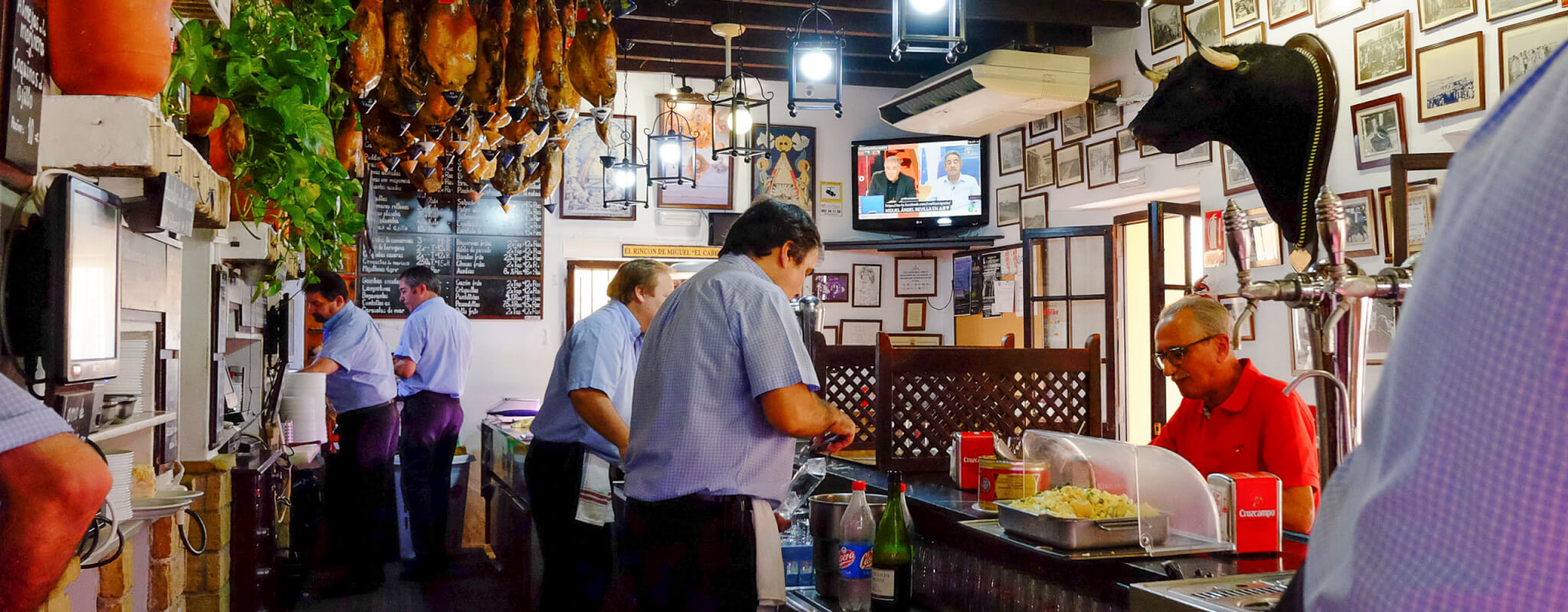
Casa Balbino tapas bar
It is used extensively locally in Andalucian cuisine, as one would expect – for me, the tapas in Jerez and Sanlúcar de Barrameda lead the world (if you doubt me, drop by Casa Balbino on Plaza del Cabildo – I’ll happily eat breakfast, lunch and dinner there when I am in the region). And where would a great gazpacho be without a splash? Sherry vinegar is, however, infinitely more versatile than for just Spanish dishes. Japanese cuisine is an obvious example, but one of many.
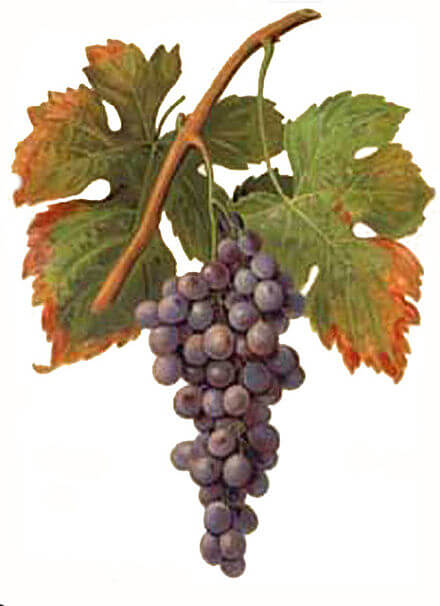
Palomino grapes (photo courtesy Ampélographie/Wikipedia)
Not surprisingly, most sherry vinegars are made from the Palomino grape, and is dry. Occasionally, a bodega may use either Moscatel or Pedro Ximenez and they will be sweet. Those made from Moscatel are considered especially aromatic, as well.
These days, production is no longer the accidental dodgy barrel in the corner, although should a barrel in the solera misbehave, it will become part of their vinegar production. Rather, as with sherry itself, sherry vinegar is made through soleras and criaderas. Since 1995, it has had its own ‘Denominacion de Origen’ and is called ‘Vinagre de Jerez’. Since 2000, it has fallen under the governance of the same body that oversees sherry, the Consejo Regulador. The only other vinegars to enjoy protected designation of origin are balsamic vinegar (“Aceto Balsamico Tradizionale“ from Modena and Reggio Emilia in Italy) and “Condado de Huelva” and “Montilla-Moriles” in Spain.
There are various classifications. Basic sherry vinegar is aged for between six months and two years – this is the vinegar known simply as Vinagre de Jerez. If aged for between two and ten years, it qualifies for the Reserva designation. Over ten years and it becomes Gran Reserva. The longer the vinegar spends in the barrels, the more it adds a slight oaky note to the range of flavors.
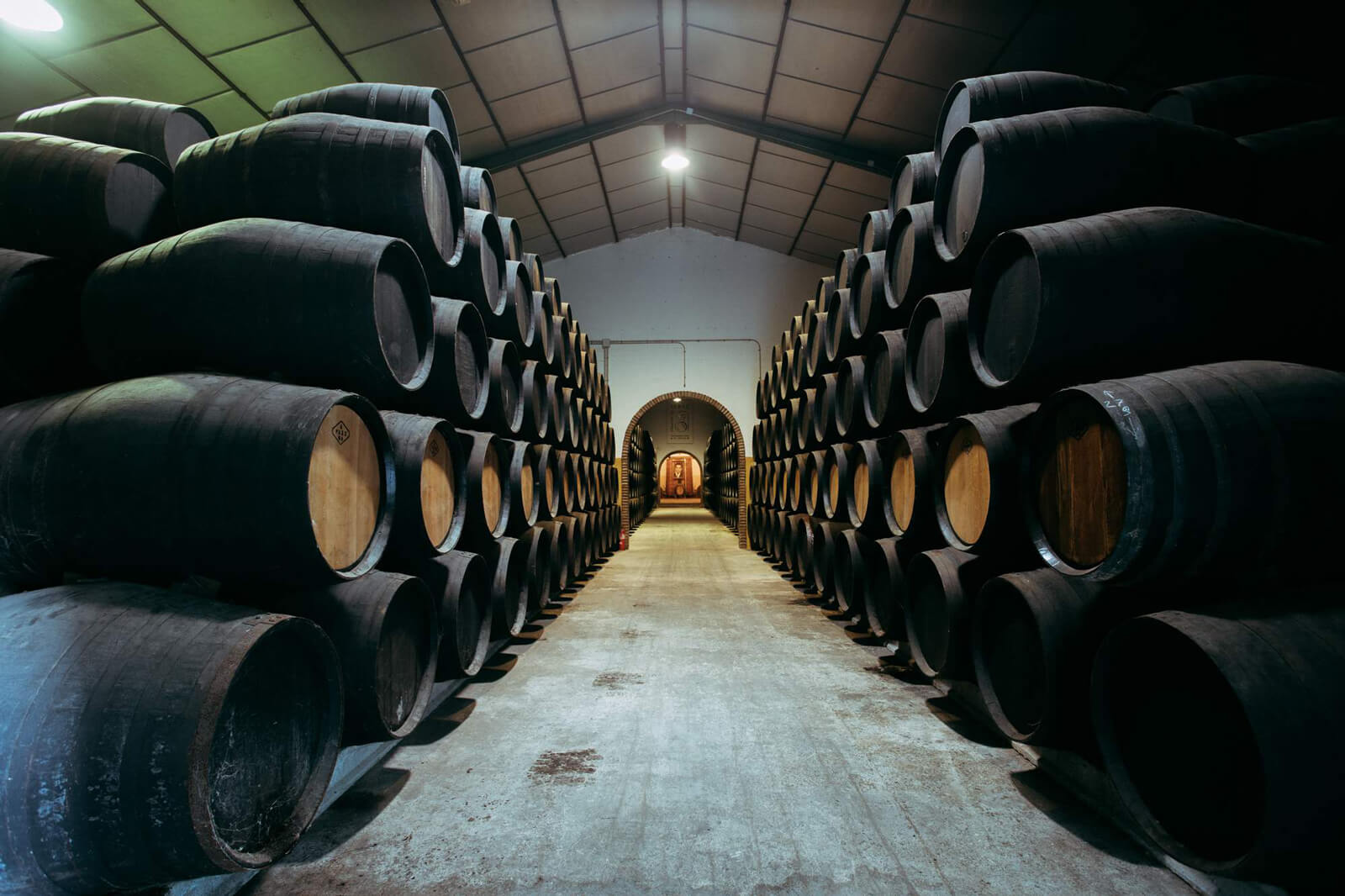
Sherry wine barrels at Bodegas Páez Morilla
Some of the producers well known for top-notch sherry vinegar include Valdespino, de Castilla and Gutierrez Colosia (I remember a visit to the latter which can confirm that). One producer that focuses almost solely on sherry vinegar is Bodegas Páez Morilla, which operates soleras with over 2,000 casks.
So, can you just use a substitute for sherry vinegar and save yourself the time and trouble of sourcing a quality example? It would be a bit like using vegetable oil when a top olive oil is required. Remember also that while an extensively aged example is peerless when it comes to complexity, younger examples can also work magic. That said, not all sherry vinegar is wonderful. Check for additives and coloring. Like everything, there are good and bad examples.
If we return to the famous Jerez triangle, the sherry Denominación de Origen includes nine municipalities. The sherry vinegar, whether from barrels which have misbehaved or which have been deliberately taken down the vinegar solera path, the contents of the barrels do not receive fortification as such, but the solera system does allow for extra complexity.
A minimum of six months of aging with the bacterial fermentation, though of course, some will receive decades more. All sherry vinegar must be at least 7% acidity, with the Gran Reservas being a minimum of 8%. These levels well exceed what one finds in most other vinegars.
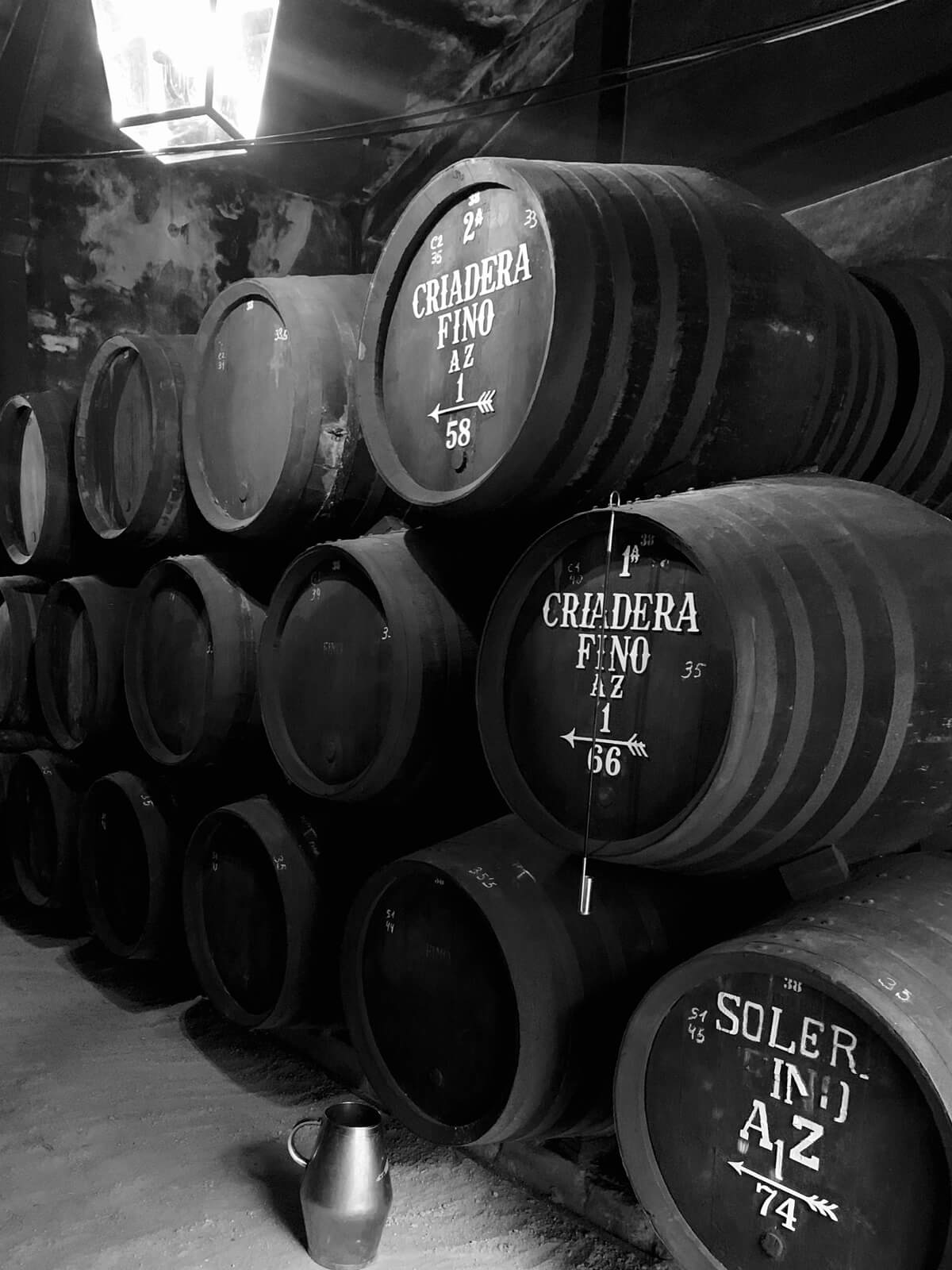
Solera sherry barrels at Bodega San Francisco in Spain
As with sherry itself, the solera system allows the vinegar to be removed from the oldest barrels for bottling, with the space filled by the next oldest, and so on. This will happen every year, meaning that every bottle will contain a tiny amount – sometimes a very tiny amount – of the oldest component. It allows each bottle to offer both complexity and freshness.
If we may, we’ll look at two very fine examples, although one might be a touch controversial – an “Australian sherry vinegar”. Apparently, despite the term ‘sherry’ being outlawed for Australian fortifieds, now called Apera, in that style (a good thing too, of course, although if one may digress, a completely different situation to the deceitful and devious attempts by producers of Prosecco to have the term banned for Australian examples – Prosecco being a grape and not a region, despite the very recent attempts to rewrite history – but that is a debate for another day and another court, as it happens), this, surprisingly, does not apply to sherry vinegar. Perhaps it was simply a loophole that is so small, no one thought to close it.
Actually, Ian Henderson, the man behind the Lirah vinegars told me that “sherry is only a reserved word for alcoholic products under the GI recognition rules. We cleared our “Shiraz Vinegar” past AGWA before exporting it”. In other words, as strange as it seems, all is legal apparently (whether it remains so, who knows, but the world can enjoy this great vinegar in the meantime). Ian notes that their process is “very traditional. We purchase Australian made “Sherry/Apera” made using flor yeast that has already been barrel aged. We then ferment the wine into vinegar and age it again for 5 years in American oak hogsheads that have been used to age Australian red wine”. He is after a “new world version of a timeless classic”. I think he has been very successful.
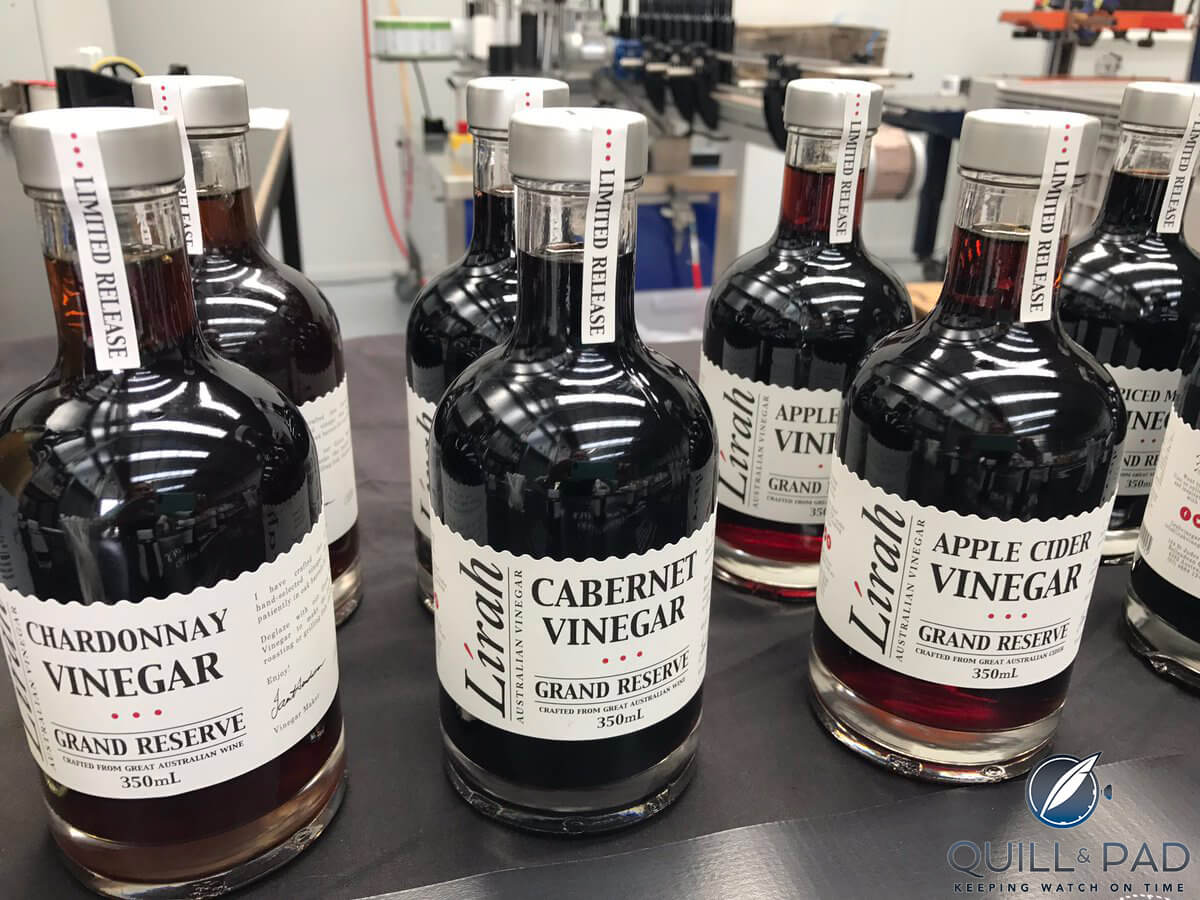
Lirah vinegars
Australia’s top vinegar producer, Lirah, makes a range of different vinegars but their version of a sherry vinegar is a cracker. It is called the Lirah Grand Reserve Sherry Vinegar ($25/375ml), although a further transgression is that it is aged for 4 years (in this case), rather than the 10 years required in Jerez. No matter. The result is a terrific vinegar, complex, fresh, deeply flavored and with a mellow and lingering finish. It may be hard to source for those not resident down under, but don’t let that stop you if you get the chance.
From here we move to the real thing, and one of the world’s great vinegars. From Equipo Navazos, their ‘La Bota de Vinagre’ Gran Reserva, Bota No 106 ($185/375ml).
We have looked at the wonderful sherries from Equipo Navazos previously (and, spoiler, will be doing so again very soon), so we won’t rehash the history here. We have also touched on some of their other projects, spirits. Imagine my delight when I discovered that they have also released a tiny quantity of an extraordinary sherry vinegar.
I contacted my friends there – Jesús Barquin (yes, as well as the co-author of my fave sherry tome, he is also co-founder of Equipo Navazos, and in his spare time, a professor of criminal law and director of the Institute of Criminology at the University of Grenada) and Eduardo Ojeda (no less accomplished, Eduardo is the technical director of Grupo Estevez, which includes Valdespino and La Guita, meaning that he is one of the more important winemakers on the planet).
Jesús told me that they had been keen on the idea of sourcing barrels of a fine sherry vinegar for their La Bota series for some time (that is largely what they do – seek out and bottle tiny quantities of extraordinary sherries), but that one of their key distributors thought it would struggle to sell – how very wrong can you be.
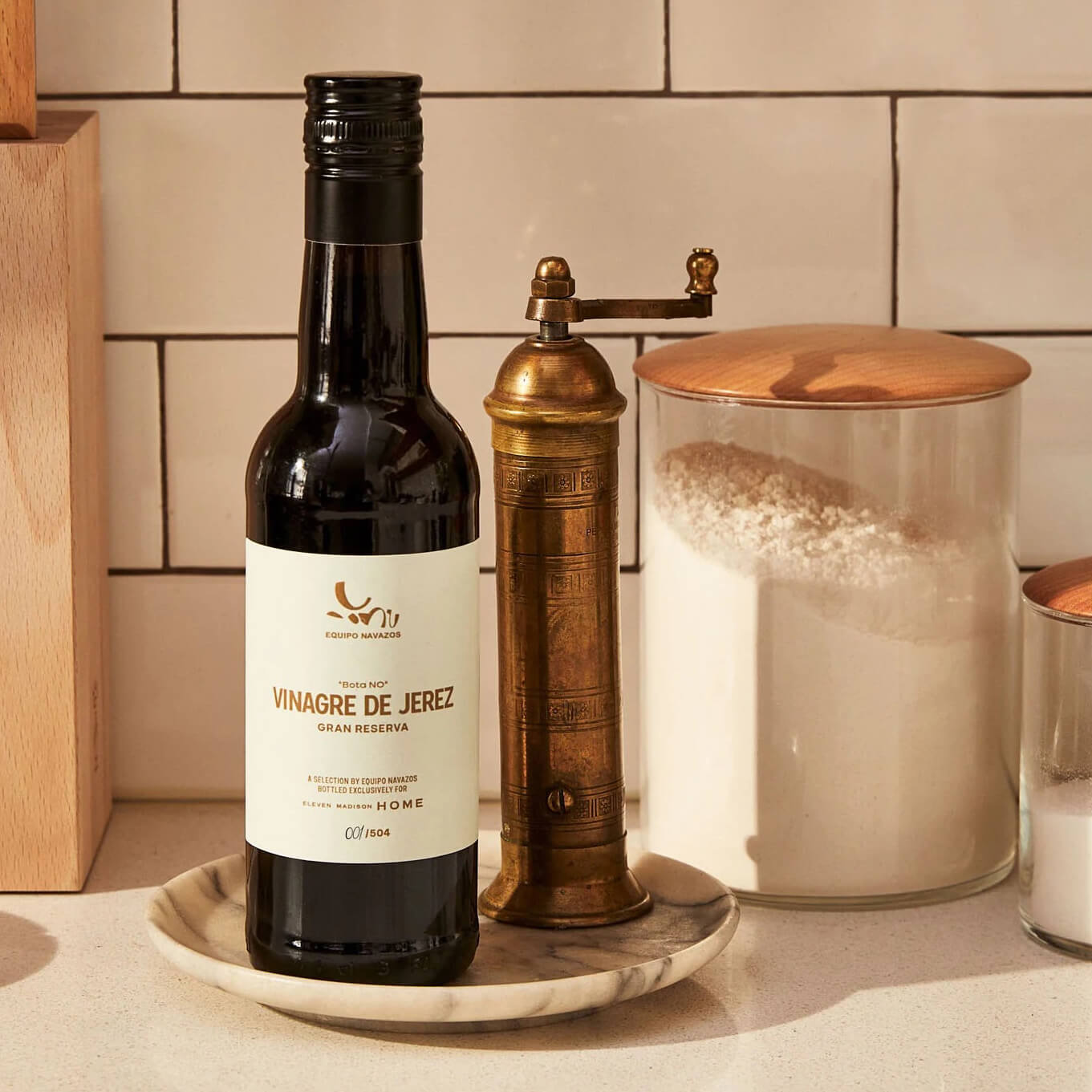
Equipo Navazos sherry vinegar for the Eleven Madison restaurant
What finally convinced Jesús and Eduardo was that the New York restaurant, Eleven Madison Park, with whom they had collaborated previously, was keen that they prepare one for them alone. They took the plunge and sourced two casks – one for Eleven Madison Park and one for normal release. This turned out to be La Bota 106 (they number their releases, so this is their 106th product of any nature, since they began almost twenty years ago). Such was the success that they also released another, slightly younger example shortly after 106 – La Bota 112 (if that one made it downunder, it eluded me).
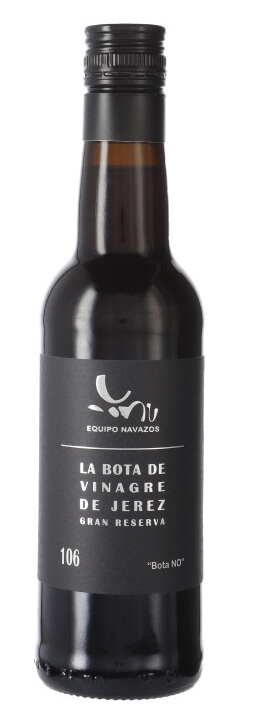
Equipo Navazos La Bota 106 sherry vinegar
The barrels for La Bota 106 were sourced from the sherry vinegar specialist, Páez Morilla. Only 1,200 half bottles were made. It comes in at an outstanding 11% acetic acid, and 3.5% alcohol. The source was a couple of the very old casks from Páez Morilla. The team describes it as “very old, very intense and concentrated, without addition or dilution and at a respectable price, although cheap if you take into account its age and quality”. Like all good sherry vinegar, there is no astringency here. Mellow complexity, incredible length, a sharp freshness and balance. Just wow!
So, how old? The original vinegar was made from barrels of wine already fifteen years old, but then laid down for another forty years. How many vinegars of any style can claim to be aged for more than half a century? What would normally happen is that tiny quantities of this vinegar would be incorporated into other products to increase complexity and add character. It is so powerful (I’ll confess that I put a drop on my tongue a long time ago and can still taste it quite clearly) that they suggest adding by dropper or making up a separate dressing using tiny amounts with various sherries and then adding that to whatever dish. It is truly amazing. When La Bota 106 is gone, we are unlikely to ever see its like again.
For the record, La Bota 112 is around thirty years of age.
While these might be hard to locate and beyond everyday use, there are still an entire world of sherry vinegars out there. Specialist delicatessens and food markets will no doubt stock several.
If sherry vinegar is not part of your life, time to invite it in!
You might also enjoy:
Primer On The Most Divisive Of All Wines: Sherry
Leave a Reply
Want to join the discussion?Feel free to contribute!



Good to know Ken. I will get some sherry vinegar next time I go in a condiment run. 😊
I have been a bit of a vinegar-head for the last couple of years. Mrs Banter bought me a 25 year old Balsamic vinegar for Christmas one year. A revelation!
I always have some (more ordinary) balsamic and white wine vinegar in my pantry.
I have also begun experimenting with varietal olive oil from Spain. Exceptional stuff, although I have to take a break from it as I put on weight very easily. My perennials are rice-bran or grape-seed oil.
Good Japanese soy sauce and balsamic vinegar are used in my kitchen every day. The combination of umami and complex sour/sweetness is addictive!
If you haven’t started experimenting with good Shoyu and Tamari, I recommend it
Hi Tam. As always, thanks for the comment. I see we share the problem of putting on weight easily. It is a cruel affliction. I have looked at doing a piece on balsamic and hopefully one day. I have also had a crack at one on top olive oils. I have not got it to work as well as I would like but I have not given up.
Shoyu yes but not as much as I should (and will, on your recommendation) but I obviously need to investigate Tamari.
Many thanks.
Thanks Ken!
Living where I do, I have access to a large array of soy sauce for specific purposes. Unfortunately, the labels are all in Japanese. 😊
But when I pick a good one, oh my!
Still haven’t sourced bonito flakes yet.
The search never ends!
I’ve caught bonito but never seen the flakes. One of my mates describes bonito as the fish you put in a pot with a stone and boil them. then when it is ready, you throw away the fish and eat the stone. I think that is very harsh.
Where can I find those delicious stones?! 😀
If you ever find out, let me know.